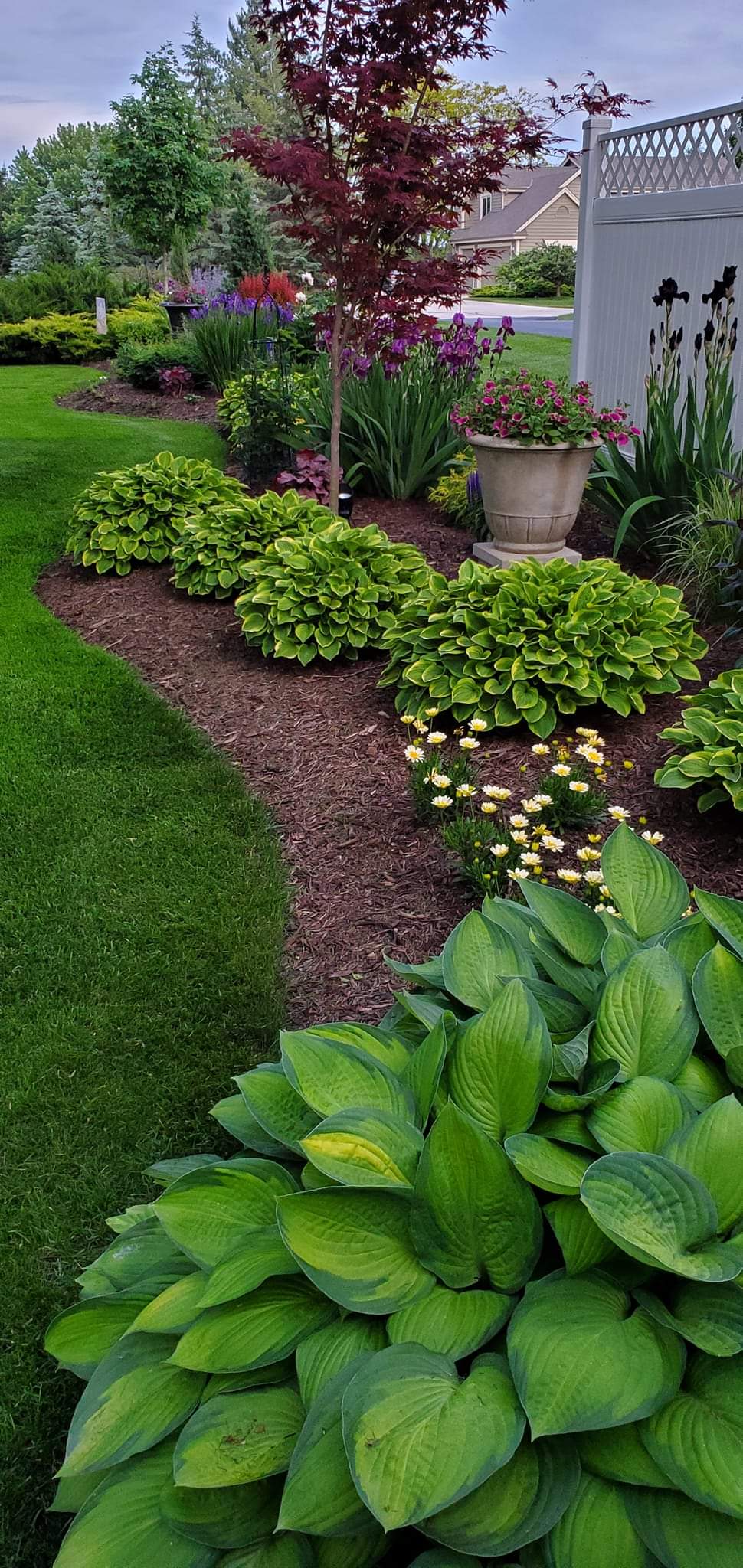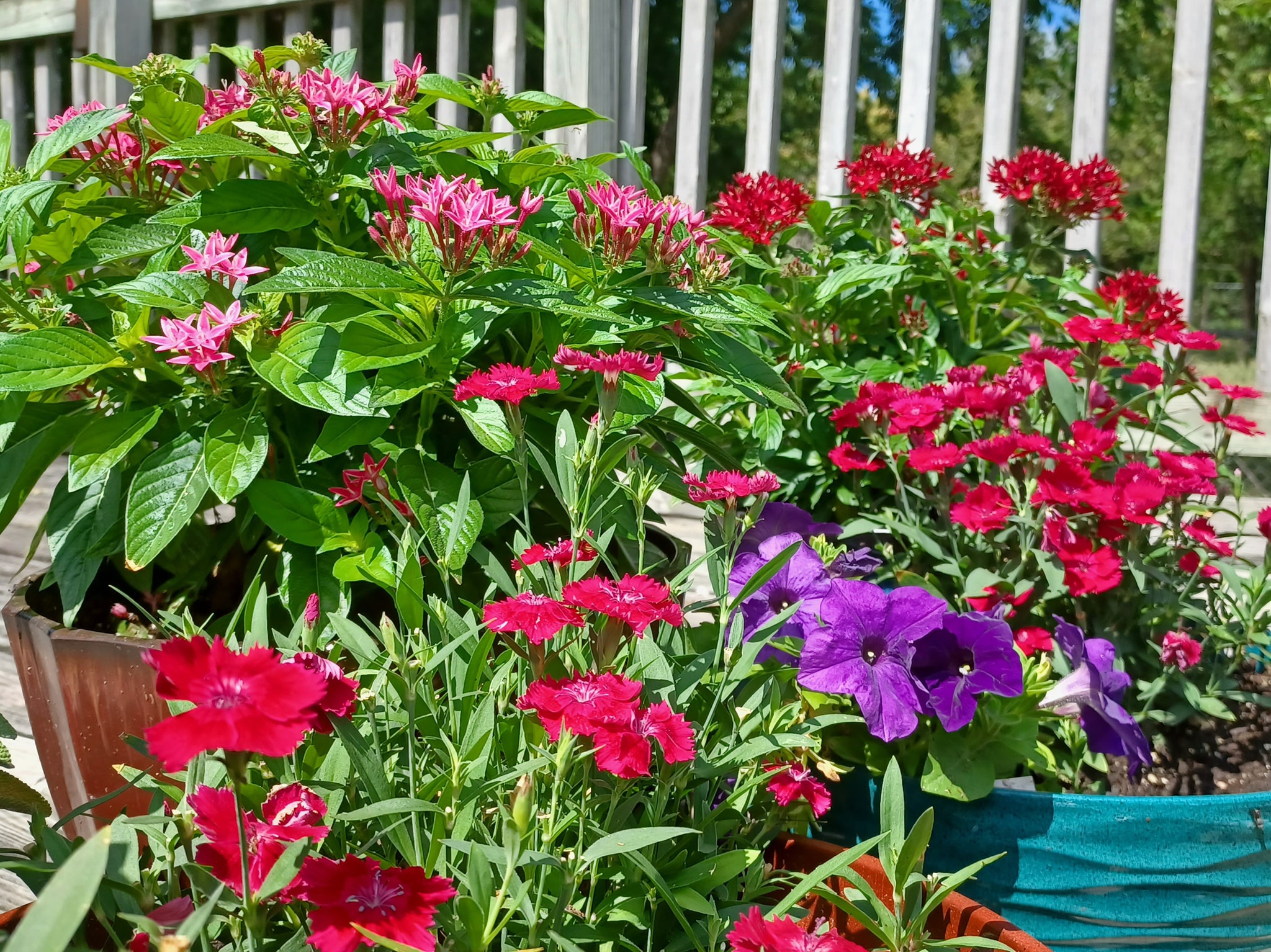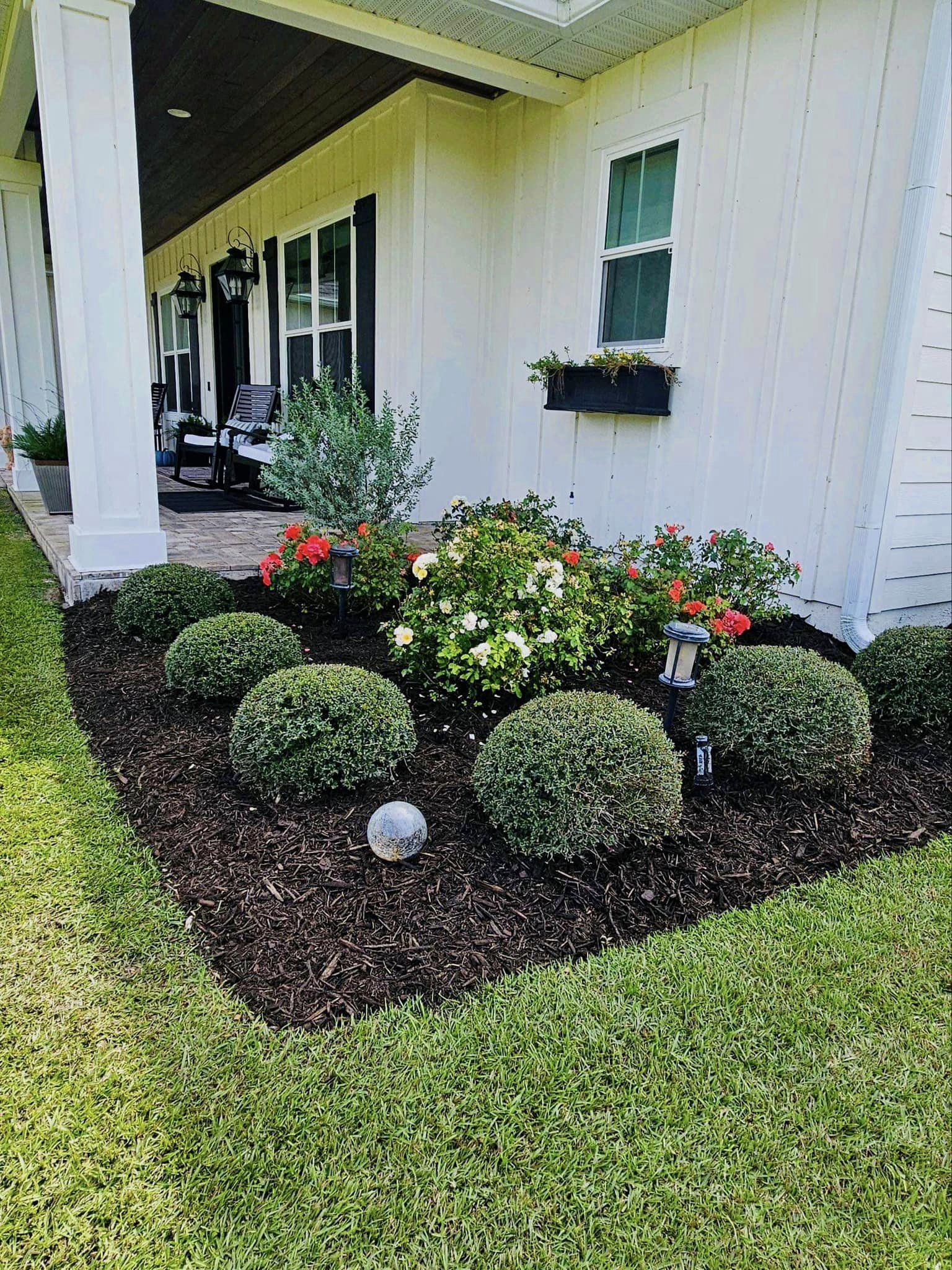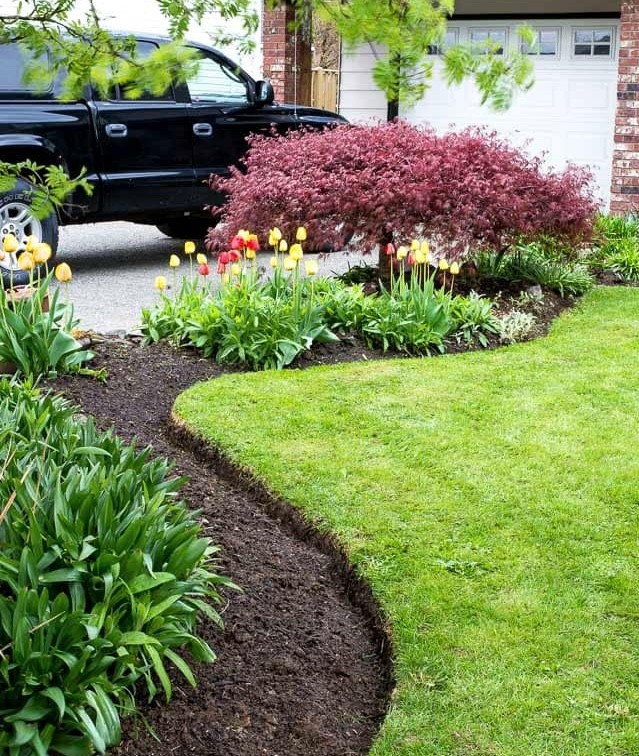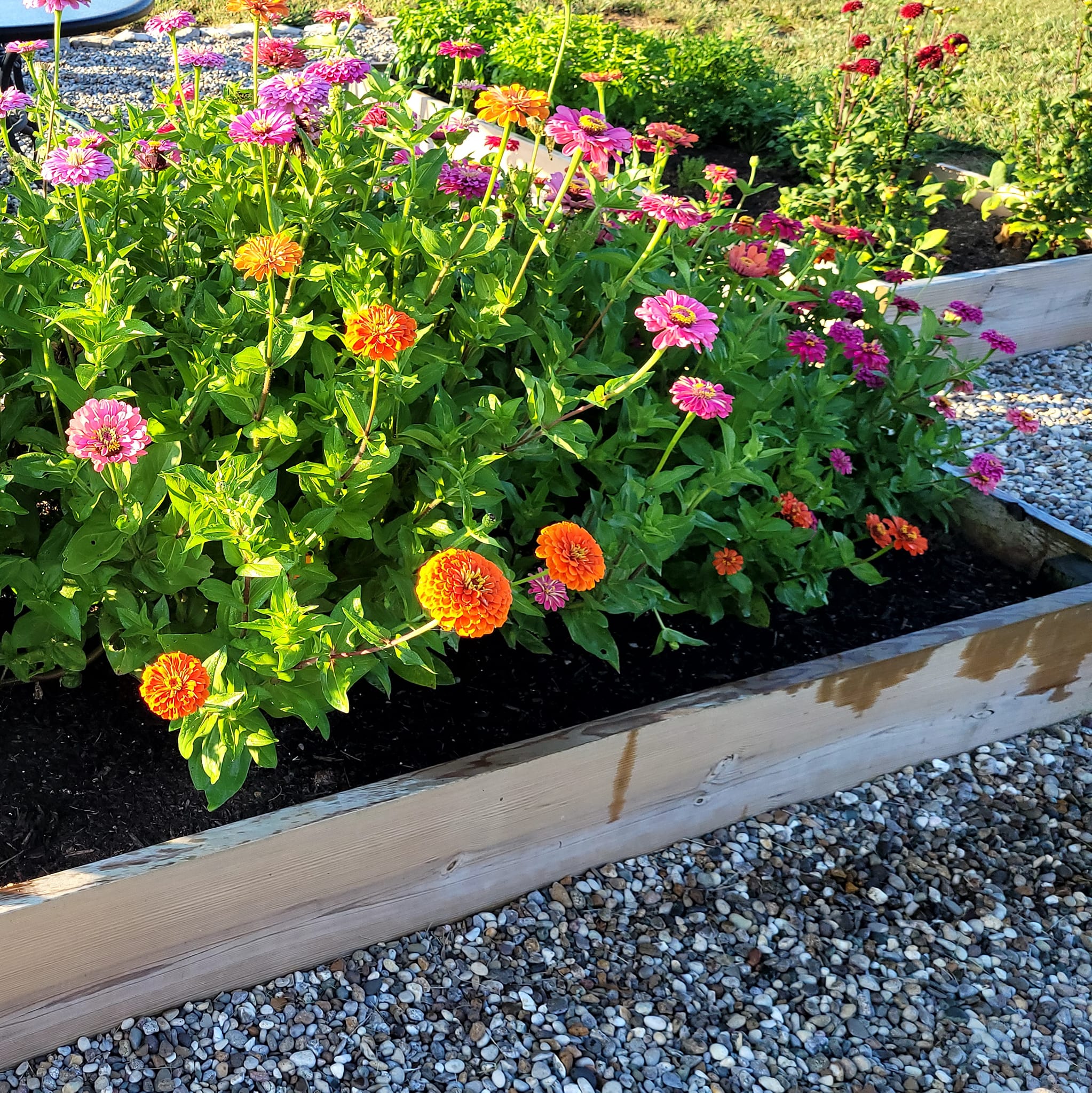Who doesn’t love flowers? They are stunning and colorful, and some even emit breathtaking fragrances. You can beautify your spaces with carefully cultivated, vibrant flowerbeds, but if you aren’t careful, the menacing weeds can quickly overrun them.
The constant battle against weeds can be frustrating, so it would be best if these unwanted plants didn’t invade your flowerbeds.
While creating a weed-free flowerbed is an attainable dream, it isn’t easy and takes work and proper strategy. There are tried-and-true methods to keep weeds at bay and ensure your flower beds remain a sanctuary of beauty.
Continue reading to learn how to transform your garden into a weed-free paradise where your flowers can truly shine.
How To Keep Weeds Out Of Flower Beds Naturally
1. Plant Generously
Your fight against weeds begins with filling your flowerbeds with plants. So, before adopting other weed control strategies, maximize the number of desirable plants in your flowerbed. With more plants in the bed, weed seedlings have less space and resources to take root and grow.
Moreover, as the flowers grow and fill the available space, they create a natural canopy that shades the soil underneath. This shading can inhibit weed seed germination and diminish the sunlight necessary for weed growth.
Also, a densely planted flowerbed leaves less exposed soil for weed seeds to settle and establish themselves. This lack of open ground reduces the chances for weeds to develop. Besides helping you control weeds, a lush, densely planted flowerbed is also visually appealing.
Select plants well-suited to the growing conditions in your area and space them closer together.
Apart from planting your flowers generously, consider adding plants, like ground cover or dense-growing perennials, to your flowerbeds since they can help shade the soil, preventing weed growth. Choose species that naturally deter weeds, such as marigolds or nasturtiums.
Read More:
- How To Kill Grass In Flower Beds Without Killing Plants Naturally
- Simple Flower Bed Ideas For Front Of House
2. Use Landscape Fabric
Before planting your flowers, consider laying a landscape fabric, a barrier that obstructs sunlight from getting to the weed seeds, thus preventing their germination and growth. It can also significantly reduce the time and effort you must set aside to weed and maintain your flower beds.
However, remember that it is not a foolproof method against weeds. Select a high-quality, permeable landscape fabric, cut it to fit your flower bed, lay it down, and secure it in place with landscape staples or heavy rocks along the edges.
After that, cut holes in the fabric where you plan to plant your flowers, plant them, and then apply a layer of organic mulch or decorative stones on top of the landscape fabric for better aesthetics and extra weed protection.
Related Post:
3. Use Mulch
One of the natural and effective ways you can employ to keep weeds at bay is with mulch. Covering your flower bed soil with mulch keeps the weed seeds from getting the sunlight they require to germinate and grow.
Mulch can also help keep a more stable soil temperature, thus helping deter weed seeds from germinating, as they prefer warm, exposed soil. In addition, it reduces evaporation, allowing the soil to retain moisture- weed seeds are less likely to germinate in consistently moist soil.
Since mulch comes in different forms, you probably wonder about the type of mulch you should use on your flowerbeds. Organic mulches are best for flower beds.
Apply 2-4 inches of mulch on your flowerbeds and replenish it periodically to maintain the desired thickness and weed control.
Read More: Easy Landscaping Ideas For Front Of House
4. Water Your Flowers Properly
Deep, well-established roots give your flowers an upper hand in their fight against weeds, but how do flower plants grow deeper roots? Proper watering practices typically involve deep, infrequent watering to encourage the development of deeper roots.
Additionally, adequate and consistent watering ensures your flowers grow strong and healthy. Healthy plants can outcompete weeds for essential resources, including space.
They can also establish a dense canopy that shades the soil, making it less suitable for weed growth.
When you water your flowerbed correctly, the soil is consistently moist around your flowers, leaving fewer opportunities for weeds to take root. Remember that underwatered or drought-stressed plants are more vulnerable to weed competition.
So, how should you water your flowerbed?
- Water infrequently and deeply rather than shallowly and often.
- Water in the early morning or late afternoon to minimize moisture on the leaves, which can promote fungal diseases in some plants.
- Avoid overhead watering since it can splash weed seeds onto your flower bed.
- Ensure your flower bed has good drainage. This helps prevent waterlogging, which can weaken your flowers and encourage weeds.
5. Edging Helps
Create a clear and distinct border or barrier between your flowerbeds and the surrounding area, such as your lawn or garden paths, for a neat, well-defined border.
Edging makes your flowerbed much more appealing, but that is not all; it helps keep weeds at bay.
The barrier you create through edging makes it difficult for weeds to encroach into the flowerbed from the adjacent lawn or garden, reducing the likelihood of weed infiltration.
You can also restrict the lateral movement of weed roots by edging below the soil surface, thus reducing their access to the nutrient-rich soil in the flowerbed.
Read More: Cheap lawn edging ideas on a budget
Edge your flowerbeds with an edging material that harmonizes with your garden’s overall aesthetic. Moreover, install the edging correctly, ensuring it goes deep enough to create an effective barrier, and regularly inspect it to ensure it remains in place and continues to prevent weed encroachment.
6. Apply Pre-Emergent Herbicides
Keep weed seeds from germinating and growing in various settings, including lawns, gardens, and agricultural fields with pre-emergent herbicides. Before the weed seeds germinate, apply them to your flower bed soil to create a barrier that prevents weed seedlings from developing roots and emerging from the ground.
This chemical barrier interferes with cell division in the root tips of germinating weeds, preventing them from growing roots and shoots.
Make sure you apply these herbicides uniformly across the soil surface of your flower bed because uneven coverage can allow weed seeds to germinate in untreated areas.
Additionally, apply pre-emergent herbicides at the appropriate depth, usually a shallow layer (around 1-2 inches deep) of soil, since this is where most weed seeds germinate. Applying the herbicide too deep or too shallow can reduce its effectiveness.
It is also worth noting that pre-emergent herbicides work well with other weed control methods, such as mulching, hand weeding, and regular maintenance. This multi-pronged approach helps create a more effective weed management strategy.
7. Create A Raised Bed
Consider creating raised beds for your flowerbeds because they create a physical barrier between the garden soil and the surrounding ground, making it more difficult for weeds to invade your flowerbed.
Raised beds are typically filled with clean, weed-free soil or a well-prepared growing medium. This reduces the presence of weed seeds in the ground, limiting the potential for weed growth. Also, raised beds often have better drainage compared to in-ground flower beds.
In addition, since raised beds are typically contained and have limited space, there is less room for weeds to establish themselves and compete with your flowers for resources.
Also, a raised bed’s walls are a barrier that makes it harder for ground weeds to encroach from the surrounding areas.
- To maximize the benefits of raised beds for weed control,
- Use weed-free soil or soil mixes when filling your raised bed.
- Apply mulch on top of the raised bed’s soil to inhibit weed growth further.
- Inspect your raised bed regularly and promptly pull them out.
- Consider using landscape fabric or weed barrier cloth beneath the raised bed to provide an additional layer of weed prevention.
8. Stay on Top Of Your Flowerbed Maintenance
Your flowerbed requires ongoing maintenance and care. Therefore, combine regular maintenance and other weed prevention strategies to create a healthy and vibrant flowerbed while keeping weeds at bay.
Regularly inspect your flowerbed and remove any weeds while still small before they go to seed. Also, take out spent flowers (deadheading) to encourage your plants to produce more blooms and prevent weeds from growing in the seed heads of your flowering plants.
Furthermore, keep the plants in your flowerbed healthy and compact through pruning and trimming. This action minimizes the extent of open space and sunlight accessible for weed seed germination.
Moreover, give your flowers an upper hand in their competition with weeds for resources with the help of fertilizers and soil amendments. Maintain your lawn if it is adjacent to your flowerbed by mowing and edging to prevent weeds from creeping into your flowerbed.
Periodically inspect your flowerbed for weed growth, insect infestations, or signs of disease. You have a better chance of preventing these issues from spreading and harming your flowers if you catch them early. Weeds easily exploit weakened or bare areas in the flowerbed.
How To Get Rid Of Weeds In Flower Beds Naturally
There are several natural methods you can use to get rid of weeds in flower beds without resorting to chemical or salt-based solutions. Here are some suggestions:
1. Manual Removal
Regularly inspect your flower beds and manually pull out weeds, especially when they are small and haven’t had a chance to set deep roots.
2. Apply Mulch
Apply a thick layer of organic mulch (such as bark chips, straw, or leaves) to the flower bed surface. This helps suppress weed growth by blocking sunlight and preventing weed seeds from reaching the soil.
3. Boiling Water
Pour boiling water over small weeds. This is an effective method for spot treatment, but be careful not to pour it on your desired plants, as boiling water can harm them too.
4. Sprinkle Corn Gluten Meal
Sprinkle corn gluten meal around your flower beds. This natural byproduct of corn processing acts as a pre-emergent herbicide, preventing weed seeds from germinating.
5. Newspaper or Cardboard
Place layers of newspaper or cardboard on the soil surface around your plants, and cover with mulch. This helps to smother existing weeds and prevent new ones from sprouting.
Final Remarks
With the weeds out of your flowerbeds, you can have more time to tend to and enjoy your flowers. Ensure your flowerbeds remain healthy and vibrant by implementing preventive measures, regular maintenance, and effective weed control methods.
Also, regularly inspect your flowerbeds for any signs of weed growth and promptly address them before they can establish a strong foothold.

Hey there, I’m Derek Schew, a writer for Lawnholic.com, where we cover everything and anything related to lawns. As someone who’s spent countless hours tending to my own lawn, I’m passionate about sharing my knowledge and helping others achieve the perfect yard. From lawn care tips to product reviews, I’m committed to providing our readers with the most accurate and up-to-date information available. So whether you’re a seasoned lawn enthusiast or just getting started, I invite you to join our community and discover the joys of a lush, green lawn.

